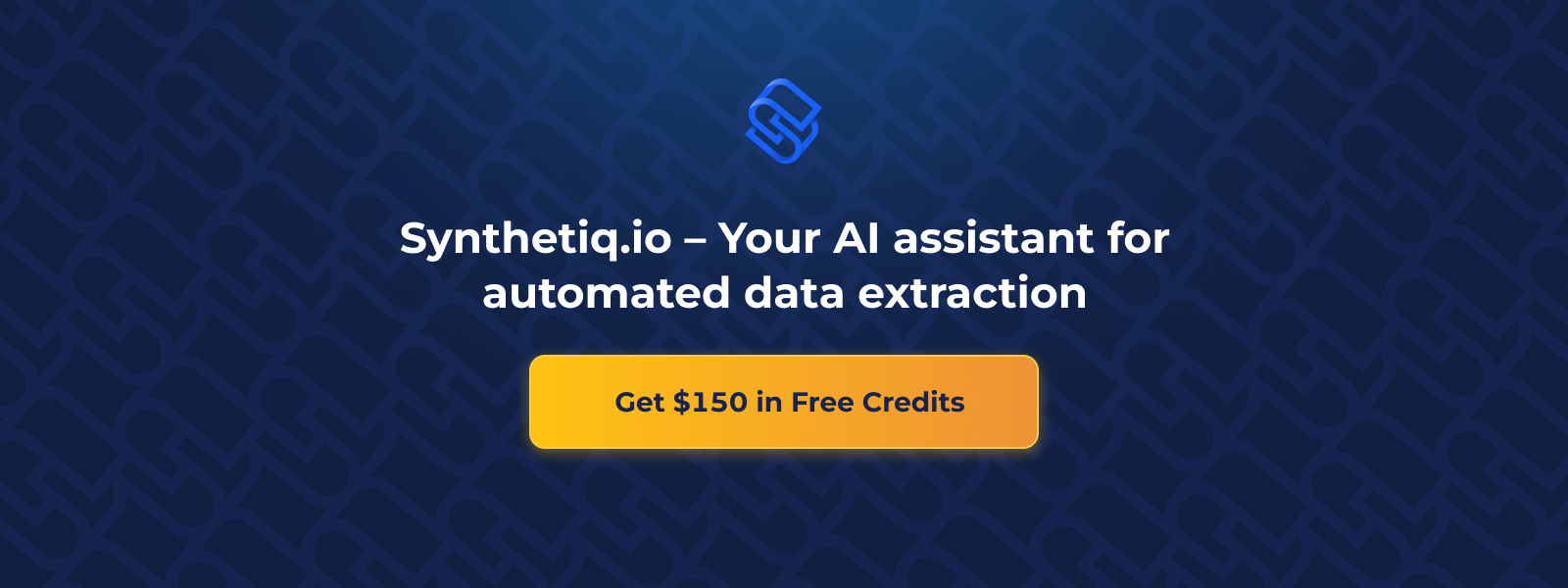The Evolution of Data Entry: A Journey from Typewriters to AI-Powered OCR

As a company that harnesses the power of AI-powered OCR technology, we've had the privilege of witnessing the remarkable transformation of data entry methods over the years. A journey that began with the humble typewriter has now evolved into an AI-driven revolution, fundamentally changing the way we handle data extraction and document processing. In this blog post, let's explore the fascinating evolution of data entry methods and celebrate the arrival of OCR powered by generative AI as the latest pinnacle of efficiency, accuracy and innovation.
The Age of Manual Typewriters
Before diving into the world of generative AI and OCR, it's important to understand where it all began. In the late 19th and early 20th centuries, manual typewriters represented the cutting-edge of data entry technology. These mechanical marvels, as groundbreaking as they were for their time, required operators to type out documents manually, often leading to human errors and slow processing times. For those of us old enough to have used a typewriter, it's easy to remember how painful it was to make - and need to correct - even a tiny mistake!
As businesses and organizations continued to grow, the need for efficient documentation became more crucial. Manual typewriters, despite their then-impressive capabilities, struggled to keep up with the demand for high-speed data management, accuracy and the inevitable necessity for automation.
The Emergence of Optical Character Recognition (OCR)
As the need for more efficient data entry methods grew, researchers and engineers began exploring the possibilities of automating character recognition. OCR technology found its roots in the inventions of Emanuel Goldberg in the 1920s and 1930s, who developed a machine capable of reading characters on maps and converting them into telegraphic codes. This marked the beginning of the OCR journey — an essential step towards the modern data entry landscape.
Throughout the following decades, OCR technology continued to advance. Early OCR machines, such as the "Gismo" developed by David Shepard in the 1950s, relied upon photoelectric cells to recognize the shapes of characters using a template-matching method. The succeeding years brought innovations like the IBM 1287, which used an array of 256 photoelectric cells to recognize alphanumeric characters recorded on punched cards.
Despite these promising developments, OCR technology still had significant limitations: it was slow, expensive, prone to errors and primarily limited to recognizing a select number of character fonts.
Computer-Assisted Data Entry and Advances in OCR
The proliferation of computer systems during the latter half of the 20th century led to significant advancements in OCR technology. Computer-assisted data entry methods, bolstered by continually improving OCR software, considerably increased processing speeds and accuracy compared to their predecessors. These systems began to find widespread use in various industries, from financial institutions and government offices to mail sorting facilities.
Yet, computer-assisted OCR technology still had its challenges. Many early systems could only recognize specific fonts or required manual proofreading to correct errors. Moreover, the vast array of document types and layouts in circulation necessitated an advanced level of adaptability—one that would eventually be facilitated by the emergence of AI.
The AI Revolution in OCR
The dawn of the 21st century brought with it a surge of interest in artificial intelligence (AI), particularly in the realms of machine learning and deep learning. These emerging technologies opened doors to unprecedented possibilities in a multitude of fields, including OCR.
As AI algorithms evolved, OCR capabilities saw a substantial boost in efficiency and adaptability. Advanced AI-driven OCR solutions could now teach themselves to recognize various fonts, languages, and document layouts, radically altering the landscape of data entry and processing. One significant advantage of integrating AI into OCR was the ability to process handwritten text, which had previously posed a considerable challenge.
Thanks to these developments, we now have powerful tools at our disposal that combine the flexibility of AI with the power of OCR. At Synthetiq, we embrace this potential to bring unparalleled convenience, speed, and accuracy to data extraction and document processing, significantly reducing manual intervention and the likelihood of errors.
The Future of Data Entry: AI-Powered OCR by Synthetiq
At Synthetiq, we believe AI-powered OCR represents the pinnacle of data entry technology. By harnessing the remarkable capabilities of artificial intelligence, our platform is designed to offer the utmost efficiency, convenience, and accuracy across a wide range of document types.
Some of the remarkable benefits of Synthetiq's AI-driven OCR include:
- Exceptional accuracy in data extraction from both PDFs and image files
- Customizability with options to choose from preset document types or design custom templates as per specific needs
- Rapid, fully automated results that save time and reduce turnaround periods
- Secure processing with AI-driven technology, ensuring maximum data privacy and security without human intervention
As we continue to embrace the AI revolution, Synthetiq is committed to remaining at the forefront of data extraction innovation. We strive to provide the best OCR solution for businesses across various industries, helping streamline processes like loan origination, bank account opening, insurance underwriting, real estate transactions and claims administration, among others. Our goal is to make document processing and data extraction as seamless, efficient, and accurate as possible for the modern business world.
In conclusion, the journey from manual typewriters to AI-powered OCR has been an incredible ride. We are both humbled and excited to be part of the technological revolution that has transformed data entry and delivered ever-evolving solutions to the ever-growing challenges businesses face today. We invite you to join us in embracing the future of data extraction and document processing, made possible by the astounding power of AI-driven OCR technology at Synthetiq.

